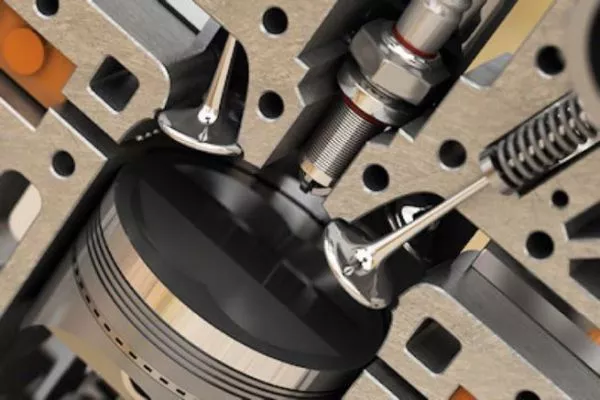Engine Principles and Technologies
The topic of engine technology opens the door to understanding two widely recognized types of engines in use today: the 2-stroke and the 4-stroke engines. Each engine utilizes the principles of an internal combustion engine, but diverges based on the mechanics involved in their operation. This exploration will highlight the distinctions, advantages, and applications relevant not just to automotive performance but also to sailing and boating experiences.
A Brief Historical Perspective
The 2-stroke engine traces its roots back to France in 1860 when innovators Hugon and Lenoir first introduced the concept. It received significant advancements by Dugald Clerk in 1879. In contrast, Alphonse Beau de Rochas patented the 4-stroke cycle in 1862, leading to the development of the first internal combustion engine by N.A. Otto in 1876. Thus began the trajectory of these pivotal technologies that have fueled diverse applications, including outboard engines in the maritime world.
Engine Operation: The Basics
At the heart of both engine types are four fundamental phases:
- Admission
- Compression
- Explosion
- Exhaust
Understanding these phases lays the groundwork for delving into the engine cycles specific to 2-stroke and 4-stroke engines.
The 4-Stroke Cycle Explained
The operation of a 4-stroke engine involves a complete cycle executed over two revolutions of the crankshaft. Each phase includes specific actions that efficiently utilize the air-fuel mixture, which powers the engine:
- First Stroke: During the downward movement of the piston, the air-fuel mixture is drawn into the cylinder through the intake port.
- Second Stroke: The piston rises, compressing the gaseous mixture, culminating in ignition by the spark plug.
- Third Stroke: The combustion creates high-pressure gases, driving the piston downwards.
- Fourth Stroke: Finally, the exhaust port opens, allowing the exhaust gases to exit the cylinder on the piston’s upward stroke.
This methodical process highlights how effective the 4-stroke engines are, making them a preferred option in many modern vehicles and vessels.
The Unique 2-Stroke Cycle
The operation of a 2-stroke engine compresses all four phases into a single crankshaft revolution. The unique aspect of this cycle is the simultaneous intake and exhaust processes which occur quickly at the end of the expansion phase:
- Compression and Ignition: The piston moves upwards compressing the air-fuel mixture, which ignites at the end of the stroke.
- Expansion: The combustion drives the piston downwards, creating thrust.
This efficient use of cycles makes 2-stroke engines notably powerful for their size, often translating into lightweight and responsive applications, especially in smaller boating engines.
Mechanical Differences Between Engine Types
The fundamental mechanical differences between 2-stroke and 4-stroke engines can be summarized succinctly. The 2-stroke engine contains fewer moving parts, as it eliminates the need for valves, relying instead on ports that open and close based on piston movements. This simplification does come with a price; to lubricate the engine, an oil-fuel mixture or a dedicated oil tank is necessary.
On the other hand, 4-stroke engines, while more complex due to the mechanical assembly of valves, offer the advantage of cleaner operation and often greater efficiency in fuel usage and reduced emissions. This complexity has led to their dominance in various applications, particularly in vehicles built for performance and reliability.
The Decision Dilemma
Choosing between a 2-stroke and a 4-stroke engine ultimately depends on the intended application and personal preference. Both engine types can deliver comparable power, so personal perceptions concerning maintenance, fuel consumption, and noise levels often influence decisions.
Considerations for Boating Enthusiasts
For those venturing into the world of sailing and boating, selecting the right engine can significantly impact the experience on water. Here are some key factors to weigh:
- Power and Weight: 2-stroke engines tend to be lighter, making them attractive for smaller boats.
- Efficiency: 4-stroke engines usually excel in fuel economy and longevity.
- Environmental Impact: 4-stroke engines typically generate lower emissions.
Understanding these differences allows sailing enthusiasts to find a vessel that aligns perfectly with their aspirations for adventure on the open water.
Exploring the Seas with GetBoat.com
As a service dedicated to ensuring unforgettable seaside escapades, GetBoat.com thrives on staying informed about all developments within the realm of sailing and maritime leisure. Whether seeking a serene day at the beach or embarking on an exhilarating journey, the service epitomizes freedom and the opportunity to customize experiences, providing clients the freedom to choose based on their preferences and budget.
Συμπέρασμα
2-stroke and 4-stroke engines each possess characteristics that cater to different boating needs. Whether it’s enjoying the speed of a 2-stroke or the efficiency of a 4-stroke, understanding these distinctions can greatly influence boating choices. Venturing to new maritime locations offers a myriad of cultural and scenic experiences, with each inlet and bay revealing stories intertwined with local traditions, flavors, and landscapes. For those keen on their next escapade by the sea, consider the versatility and adventure of renting a boat, as each water body has its own tale to tell just as engaging as the local cuisine, architecture, and dialect. For a truly tailored boating experience, visit GetBoat.com.


